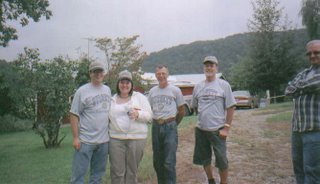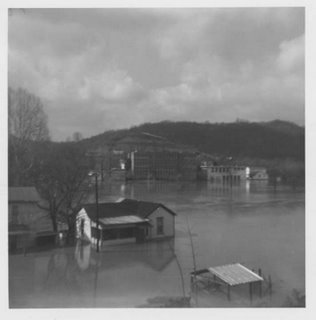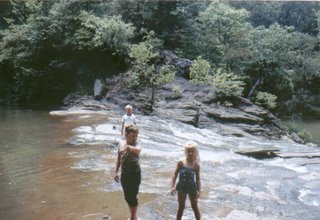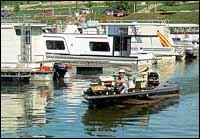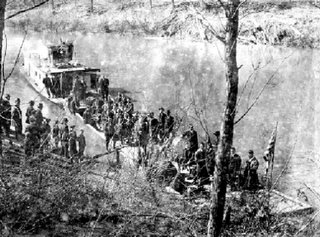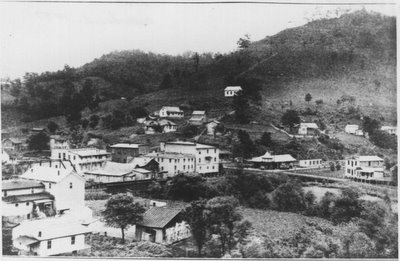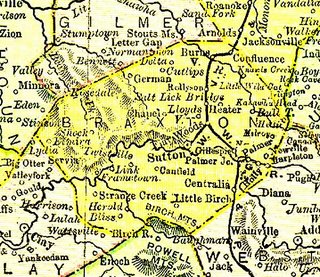 Click on the photos to enlarge them.
Click on the photos to enlarge them.Orlando, at the junction of the two arms of Oil Creek, the left branch and Clover Fork, floods maybe twice a year. It isn't the life threatening deluges that towns further down the waterways knew before the dams were built, (See the entry in Oct '06, Burnsville Floods.) The biggest problem these days is that the roads become impassable. If you know the area, you can usually find another way to get where you're going, but it might take you 20 miles or so out of your way. Still, nature shows its force, crops and property can be lost, and you've got a mess to clean up, especially if your buildings are not above the high water line.
Two floods are shown here. Neither was a record breaker for Orlando and neither resulted in loss of life, although the cleanup is never fun.

The top two photos, left and right, are from the flood of November, 1985. Both are taken from the The Rusmisell & Fury Addition on the hill looking down on Oil Creek near the red brick church. About where the white house is situated in the photo to the left, the Rush Hotel stood when Tom Jeffries was a boy. In a Feb '07 entry, Childhood in Orlando, Tom Jeffries remembers "going to the old [Rush] hotel building after the flood of 1950 with my mother and my Aunt Opal (Jeffries) McCrobie to clean up the lower floors. There was about an inch of mud on the floors. It was quite a nasty job."
The three photos at the
 bottom here are from a flood in February 2004 which was not nearly as high. The upper left photo below is looking east, up Clover Fork, from in front of the store. The lower left photo turns around and faces west, showing the warehouse on the left. Notice that the cement foundation of the store is built far above this high-water line and the
bottom here are from a flood in February 2004 which was not nearly as high. The upper left photo below is looking east, up Clover Fork, from in front of the store. The lower left photo turns around and faces west, showing the warehouse on the left. Notice that the cement foundation of the store is built far above this high-water line and the  pilings the warehouse is built on hold the wooden floor above the damages of this, and most, Orlando floods. On the right you are looking on the o
pilings the warehouse is built on hold the wooden floor above the damages of this, and most, Orlando floods. On the right you are looking on the o ther side of the bridge across Oil Creek, looking west toward Oil Creek Road, coming in from Burnsville. The top of the creekbed is well below the water line. Even the rail road tracks and the road are well below water, as are the floors of the homes that sit next to Oil Creek.
ther side of the bridge across Oil Creek, looking west toward Oil Creek Road, coming in from Burnsville. The top of the creekbed is well below the water line. Even the rail road tracks and the road are well below water, as are the floors of the homes that sit next to Oil Creek.Thanks to Sandy (Burgett) Conrad for both sets of photos.




